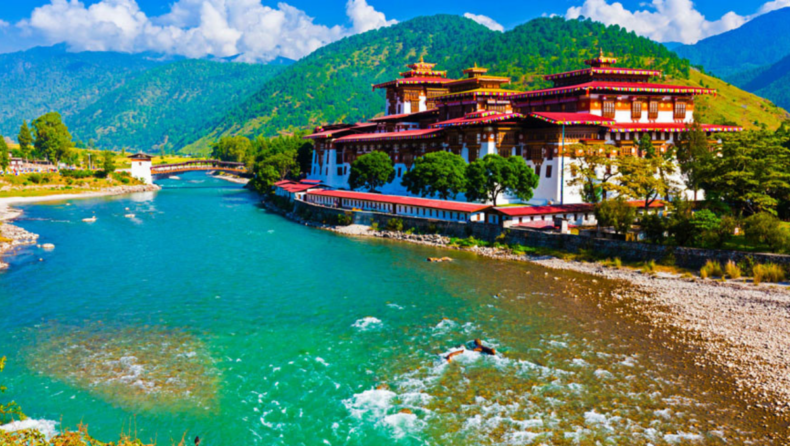Bhutan is all set to fully reopen its borders with India for tourism from September 23 after more than two and half years of Covid 19 restrictions.
The Himalayan Kingdom is known for its monasteries, high Himalaya peaks, and many more. Tourism is one of the highest revenue for Bhutan’s economy.
Since covid pandemic, textiles businesses, handicrafts sellers, restaurants, hotels, and other areas are a major hit, as they were no revenue generation due to restrictions on international travelers.
Bhutan stabilized Pandemic

Since 2020, Bhutan has seen over 60,000 covid infections and 21 deaths due to Covid-19 hence they shut doors to tourists as they received the first covid detected way back in March 2020.
Before the pandemic, the tourism industry in the Buddhist Kingdom had over 60,000 employed people, and the revenue generated was 84 million US dollars.
After vaccinating 90 percent of the population, they paved the way for international tourists to visit the country.
Bhutan increased SDF for International Tourists
The only carbon negative in the world has decided to increase the Sustainable Development Fee (SDF) for entry from tourists.
Before the pandemic, the fee was 65 US dollars per person per night for international tourists, but for Indian tourists fee levied was Rs 1200 per person per night (Indians are allowed to pay in INR).
However, SDF will be waived for the visitors to the Bhutanese towns bordering India before the first designated point identified by the government. The fee will be levied on the visitors who stay at night within the border.

Post-pandemic, the SDF amount raised to 200 US dollars for all international tourists, and for Indian visitors, the fee remains the same as now.
Hitherto, international tourists used to subscribe to a minimum daily package rate that includes all packages.
From this June, the minimum daily package rate system removed and more choices are available to tourists to pick an option of their own, according to tourism officials of the country.
The SDF amount is used for upskilling employees in the tourism sector and will go towards maintaining the carbon-neutral country tag.
Funds are allocated to various projects in upgrading facilities, infrastructure, and services for nationals and tourists.
The amount will be utilized for free healthcare and education for the children of the country, said an official from the Tourism Council of Bhutan.
New entry points for Indians
Earlier, entry permits for Indians were only through Phuentsholing and Paro, but now they are allowing tourists through the Gelephu along the Assam, Samdrup Jongkhar gates, and Samtse.

Tourism officials urged tourists to carry their passport or voter ID cards and other relevant documents to have hassle-free entry into the country.
The country shares its boundaries with China and India. The Himalayan kingdom shares its borders with Indian states like Assam, Arunachal Pradesh, Sikkim, and West Bengal.
The Buddhist Kingdom is a top attractive destination for Chinese travelers.
To minimize the pandemic infections entry into the Kingdom, officials closed its international borders in 2020.
Read More: Indian tourism wouldn’t revive fully like pre-covid till 2026, states NCAER













